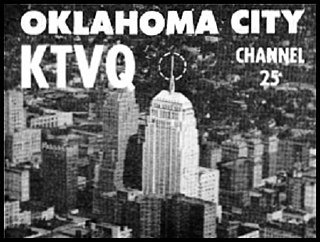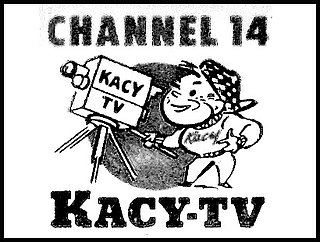
WVTV is a television station in Milwaukee, Wisconsin, United States, affiliated with The CW and owned by Sinclair Broadcast Group. The station's studios are located on Calumet Road in the Park Place office park near the I-41/US 45 interchange on Milwaukee's northwest side; its transmitter is located on North Humboldt Boulevard in Milwaukee's Estabrook Park neighborhood as part of the Milwaukee PBS tower.

WXIX-TV is a television station licensed to Newport, Kentucky, United States, serving the Cincinnati metro as the market's Fox affiliate. It is owned by Gray Television alongside low-power Telemundo affiliate WBQC-LD and 24/7 weather channel WZCD-LD. The three stations share studios at 19 Broadcast Plaza on Seventh Street in the Queensgate neighborhood just west of downtown Cincinnati; WXIX-TV's transmitter is located in the South Fairmount neighborhood on the city's northwest side.

WJTV is a television station in Jackson, Mississippi, United States, affiliated with CBS and The CW. Owned by Nexstar Media Group, the station has studios on TV Road in southwest Jackson, and its transmitter is located in Raymond, Mississippi.
WTAC-TV was a television station broadcasting on ultra high frequency (UHF) channel 16 in Flint, Michigan, United States. It was owned by the Trendle-Campbell Broadcasting Company alongside radio station WTAC and was affiliated with ABC. The station began broadcasting on November 26, 1953, as Flint's first television station and the second in the region, but it ceased operation five months later on April 30, 1954. Early economic difficulties with UHF television in the United States and competition from the very high frequency (VHF) stations in Detroit, whose signals reached Flint, largely precipitated its demise.

WCOV-TV is a television station in Montgomery, Alabama, United States, affiliated with the Fox network. It is owned by Allen Media Broadcasting alongside Troy-licensed Cozi TV affiliate WIYC and low-power local weather station WALE-LD. The three stations share studios on WCOV Avenue in the Normandale section of Montgomery; WCOV-TV's transmitter is located southeast of Grady along the Montgomery–Crenshaw county line.

WSSP is a commercial radio station in Milwaukee, Wisconsin, owned by Audacy, Inc. It airs a sports radio format known as "1250 AM The Fan." Most of its programs are from Infinity Sports Network and the BetQL Network.

KTVQ, UHF analog channel 25, was an ABC-affiliated television station licensed to Oklahoma City, Oklahoma, United States, which operated from November 1, 1953, to December 15, 1955. The station was owned by the Republic Television and Radio Company. KTVQ's studios were located on Northwest 19th Street and North Classen Boulevard in northwest Oklahoma City's Mesta Park neighborhood, and its transmitter was located atop the First National Bank Building on North Robinson and Park Avenues in downtown Oklahoma City.
KCTY was a television station in Kansas City, Missouri, United States. It broadcast on ultra high frequency (UHF) channel 25 from June 6, 1953, to February 28, 1954, and was the second television station to begin broadcasting in the Kansas City area, after WDAF-TV. KCTY was an affiliate of the DuMont Television Network; originally owned by the Empire Coil Company, which had pioneered UHF telecasting, DuMont purchased the station outright at the end of 1953 and operated it for two months as a study in the problems of struggling UHF stations nationwide before concluding that there was no path to economic viability. The studio for KCTY was located in the Pickwick Hotel in downtown Kansas City, Missouri; the transmitter was located in a rural area that today is part of Overland Park, Kansas.

WROV-TV was a television station on ultra high frequency (UHF) channel 27 in Roanoke, Virginia, United States. It broadcast from March 2 to July 18, 1953, becoming the first UHF station in the United States to cease broadcasting. Its failure was the first of many in the early days of UHF television, which was hindered by signal issues in mountainous areas and the lack of UHF tuning on all television sets—a problem not resolved until the All-Channel Receiver Act took effect in 1964.
WNAO-TV, UHF analog channel 28, was a CBS-affiliated television station licensed to Raleigh, North Carolina, United States. Owned by the Sir Walter Television Company, it was the first television station in the Raleigh–Durham area and the first UHF television station in North Carolina, broadcasting from July 12, 1953, to December 31, 1957. The station closed because of the establishment of higher-powered, more accessible very high frequency (VHF) television stations in the region.
KNUZ-TV was a television station broadcasting on ultra high frequency (UHF) channel 39 in Houston, Texas, United States, affiliated with the DuMont Television Network. It signed on the air on October 22, 1953, as Houston's third television station and first UHF outlet; it closed on June 25, 1954, after having lost money its entire existence and competing with two existing commercial very high frequency (VHF) outlets. KNUZ-TV's studios and transmitter were located at 4343 Cullen Boulevard in the Texas Television Center on the University of Houston campus.

KEDD was a television station broadcasting on ultra high frequency (UHF) channel 16 in Wichita, Kansas, United States, that operated from August 15, 1953, to April 30, 1956. It was the first television station based in Wichita, though stations could be picked up from nearby Oklahoma as early as 1949 with a high enough antenna. The station's studios were located at 2815 East 37th Street North.

WGVL, UHF analog channel 23, was a television station in Greenville, South Carolina, United States that existed from 1953 to 1956. The station was the first to operate in Greenville, but like many early UHF stations, the arrival of new stations on the VHF band imperiled its ability to secure programming and viewers. WGVL signed off the day that WSPA-TV signed on channel 7, having fought for years alongside fellow UHF station WAIM-TV in Anderson to prevent the television station from being built; the case lingered into 1960, well after the station ceased broadcasting.
WIRK-TV, UHF analog channel 21, was a television station licensed to West Palm Beach, Florida, United States. It was the first television station in the Palm Beach area, signing on September 13, 1953. However, it was quickly overshadowed by new VHF stations, which took away its network affiliations, and ceased telecasting February 29, 1956.

KTVE, UHF analog channel 32, was an independent television station licensed to Longview, Texas, United States, that operated from 1953 to 1955. KTVE was one of the first television stations in east Texas. However, its use of the quickly outmoded UHF, and the arrival of a VHF station in the form of KLTV, made continued operation unviable, and the station closed on Christmas Day 1955.
KETX was a television station on channel 19 at Tyler, Texas, that operated between September 1953 and October 1954. It was the first television station in East Texas and the first UHF station in the entire state; however, its operation was fraught with technical and financial difficulties, and the coming of a VHF station, KLTV, was an existential threat to the smaller UHF outlet, causing its closure.
WKAB-TV was a television station on channel 48 in Mobile, Alabama, United States. It was the first television station to broadcast in Mobile, operating from December 1952 to August 1954. As a UHF television station it was at a severe competitive disadvantage to the VHF station—WALA-TV—which started up in Mobile at the same time causing WKAB-TV to lose money and eventually fold.

KACY, UHF analog channel 14, was a television station serving St. Louis, Missouri, United States that was licensed to Festus. One of the earliest UHF television stations in the country, KACY boasted of being the "most powerful new television station in the Middle West" but was a near-immediate market failure, broadcasting from November 25, 1953, to April 2, 1954. The station unsuccessfully contended that a conspiracy by another St. Louis-area station had impeded it from carrying network programming.
WCOS-TV was a television station broadcasting on ultra high frequency (UHF) channel 25 in Columbia, South Carolina, United States. The first television station to broadcast in South Carolina, it was owned by Radio Columbia alongside the WCOS radio stations. It operated from 1953 until 1956, when it shut down and sold its assets to competitor WNOK-TV amid a difficult economic environment for UHF television stations.
WBUF-TV was a television station that broadcast on ultra high frequency (UHF) channel 17 in Buffalo, New York, United States. It broadcast from August 17, 1953, to February 1955 and again from March 1955 until the morning of October 1, 1958.












